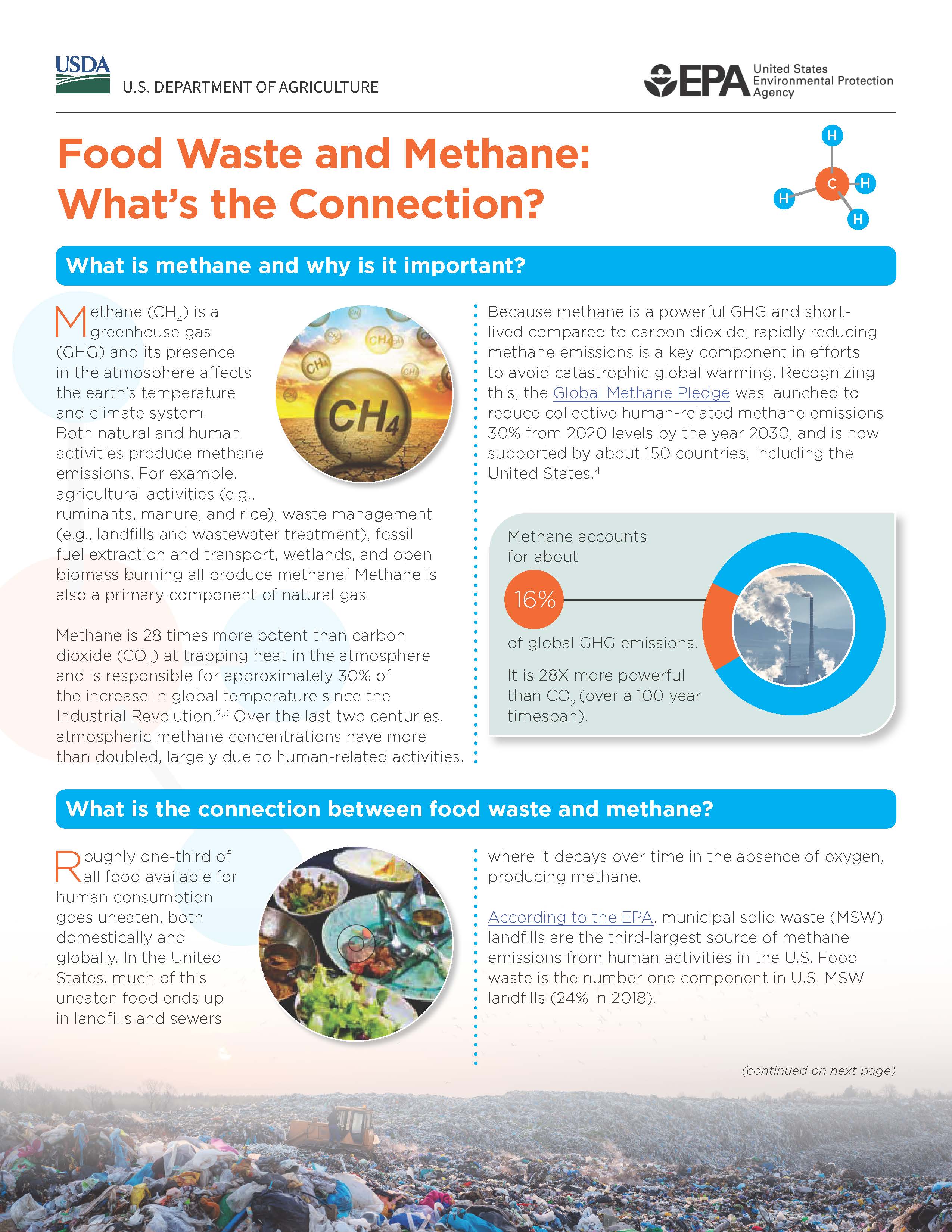- Food Loss and Waste
- Why should we care about food waste?
- National Strategy for Reducing Food Loss and Waste and Recycling Organics
- Federal Interagency Collaboration to Reduce Food Loss and Waste
- U.S. Food Loss and Waste 2030 Champions
- USDA Activities and Partnerships
- Farmers
- Businesses
- Consumers
- Schools
- Donating
- Funding
- Frequently Asked Questions
- Latest News and Multimedia
- Videos
- Contact Us
In the United States, food waste is estimated at between 30-40 percent of the food supply. This is based on USDA estimates of 31 percent food loss at the retail and consumer levels. This added up to approximately 133 billion pounds and $161 billion worth of food in 2010.
Most people don’t realize how often they waste food and the negative impacts it can have for food security, the environment, and climate change. Reducing food loss and waste could benefit them, their families, and the world, now and in the future.
Wholesome food that is currently wasted could help feed families in need
- Safe and wholesome food that is currently thrown away could help feed hungry people and reduce food insecurity today. Each year, Feeding America and its network of food banks rescues around 3.6 billion pounds of food. This represents only a small percentage of food that could have been donated but ended up in a landfill.
Reducing food waste can save or make money
- The Business Case for Reducing Food Loss and Waste found that most businesses achieve positive returns from reducing food loss and waste.
- For farmers, businesses, and organizations, the financial incentives to reduce waste can also include tax incentives for donating wholesome, unsold food.
- In some areas, trash pickup is less expensive if volume is reduced by keeping wasted food out of the garbage. In addition, some haulers lower fees if wasted food is separated from the trash and sent to a compost facility instead of the landfill.
- On average, households could save about $370 per person annually. Imagine what a family of four could do with an extra $1,500 each year.
Resources could be conserved for more productive uses
- When food is wasted, so too is the land, water, labor, energy, and other inputs that are used in producing, processing, transporting, preparing, storing, and disposing of the discarded food.
Greenhouse gases generated from food rotting in landfills could be reduced to help mitigate climate change
- According the U.S Environmental Protection Agency, in the United States, food is the single largest category of material placed in municipal landfills, where it emits methane, a powerful greenhouse gas. Municipal solid waste landfills are the third-largest source of human-related methane emissions in the United States, accounting for approximately 14.1 percent of these emissions in 2017.
- In 2021, the U.S. Environmental Protection Agency released, From Farm to Kitchen: The Environmental Impacts of U.S. Food Waste to inform domestic policymakers, researchers, and the public about the environmental footprint of food loss and waste in the U.S. and the environmental benefits that can be achieved by reducing U.S. food loss and waste.

Did you know that decomposing food waste releases methane, a potent greenhouse gas (GHG) with higher warming potential than CO2? To learn more, check out the new USDA and EPA factsheet, Food Waste and Methane: What’s the Connection? (PDF, 2.1 MB)
Additional information on the impacts of food loss and waste and ways to reduce it can be found at Further with Food: Center for Food Loss and Waste Solutions.
Contact Us:
Dr. Jean Buzby
USDA Food Loss and Waste Liaison
jean.buzby@usda.gov

